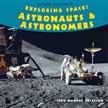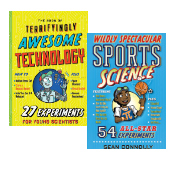|
|
Scientists and Inventors - Who Was? Set of 11 PaperbackCode: WHOWA208
Add to Wish List
Notify me when this is back in stock. Quantity in Basket:
None
Shipping Weight: 2.67
Format: Paperback
Accelerated Reader Books Publisher: Grosset & Dunlap
Series: Who Was?
Ages: 8 to 12
Size: 5¼ X 7½
Accelerated Reader: Yes
List Price: $65.89
Your Price: $39.54
Savings: $26.35 (40%)
NO LONGER AVAILABLE
|




